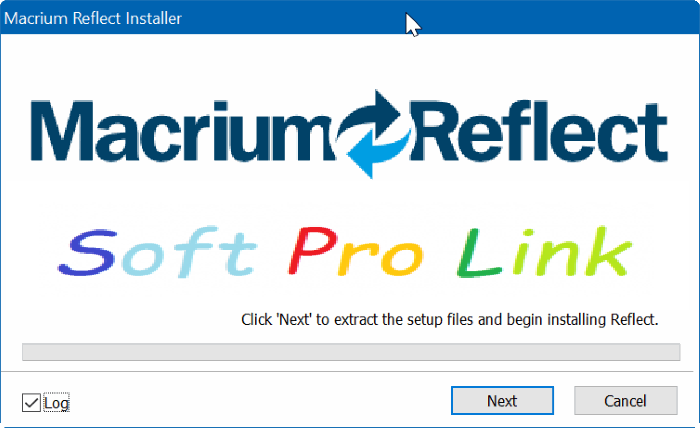

- #MACRIUM REFLECT 6 KEYGEN DRIVERS#
- #MACRIUM REFLECT 6 KEYGEN DRIVER#
- #MACRIUM REFLECT 6 KEYGEN ARCHIVE#
- #MACRIUM REFLECT 6 KEYGEN FULL#
- #MACRIUM REFLECT 6 KEYGEN WINDOWS#
#MACRIUM REFLECT 6 KEYGEN FULL#
In some cases, however, subsequent careful examination of logged results reveals that they have done so by switching automatically (and often silently) to their full sector-by-sector backup capability rather than using their so-called “intelligent backup” of used sectors only. I seem to remember never being able to get the Linux ones to actually work (as far as booting) with Aomei. I used the WinPE rescue media for Linux restore operations with Aomei, and they worked fine.
#MACRIUM REFLECT 6 KEYGEN WINDOWS#
My various versions of True Image always had Linux rescue media, while Aomei has a choice of Linux or WinPE, and I am not certain about Macrium (and I don’t really feel like booting Windows just to find out). The rescue media for Windows backup programs was almost always Linux-based in years past anyway, before Microsoft loosened the restrictions on WinPE. I’ve restored these backups and ended up with a perfectly functional system many times, so I have no less trust in any of the three to properly image and restore EXT4 volumes than I do Windows ones. As the data within the volume (including the file metadata) is encrypted, the only way for a system to back that volume up with the volume locked is to do it sector by sector. The one exception is the LUKS encrypted volume I am using on my Acer Swift since I discovered that Acer/Insyde “helpfully” give a key to anyone who tries to break into my PC’s encrypted data. I’ve used Macrium Reflect, Aomei Backupper, and Acronis True Image to make Linux EXT4 backups, and none of them insist on a sector by sector backup. AOMEI encourages making a bootable system image in their WinPE environment.
#MACRIUM REFLECT 6 KEYGEN ARCHIVE#
USB sticks are so big these days, you could even store a spare copy of the system image archive on the rescue media, so you don’t have to lug around a hard drive or external SSD when you travel.
#MACRIUM REFLECT 6 KEYGEN DRIVERS#
Windows 10 tip: Back up your third-party hardware drivers But it’s nice to know the rescue media could use these network drivers. From this, the Macrium Reflect WinPE 10 environment can pick up both the Ethernet and the Wireless WiFi drivers. I do however, include on my rescue media USB stick a full uncompressed copy of my system’s current Windows DriverStore from the System32 folder. Most home users aren’t doing these things. Networking comes into play only if you are backing up to a network drive, or restoring from a network drive location.
#MACRIUM REFLECT 6 KEYGEN DRIVER#
Maybe a touchscreen driver on some 2-in-1 devices. The only useful special drivers not found in the backup programs’ standard WinPE environment are networking drivers. No guarantee that it will fix the particular problem that you’re experiencing, but it may be worth a try. There may be other ways to accomplish the same thing, but that was the easiest solution I found for my own issue. It was then able to respond correctly to Refect’s Other Tasks -> Screen Resolution settings in that WinPE environment. So I copied that entire FileRepository subfolder to my C:\boot\Macrium\Drivers\Video folder and support for my AMD video was thus loaded when I booted using Reflect’s WinPE rescue media environment. In my own case, the Windows Device Manager driver details for my AMD video card told me that one of its driver files was amdkmpfd.stz and searching for that file under C:\Windows\System32\DriverStore\FileRepository found it in subfolder c0296217.inf_amd64_5c110cd680d977f2. At a time before Macrium improved Reflect’s screen resolution behavior when booted to the WinPE environment I found it necessary to add my own system’s video driver to those which Reflect’s rescue build process included automatically by default. Without knowing your situation in detail, the best I can offer is an example from my own past history. Looking at the driver details in the Windows Device Manager can help you to identify the correct FileRepository subfolder. In such cases, the trick is to find the complete package for driver installation as a subfolder of C:\Windows\System32\DriverStore\FileRepository and copy that entire subfolder to the C:\boot\Macrium\Drivers folder. In less common circumstances, users may be forced to discover and add their own driver inclusions. It’s all of the other user interface “bells and whistles”, and creating rescue disks and operational scheduling/scripting are probably the two most prominent sources of confusion in that latter category.Īlthough Macrium has done a very commendable job of automating the inclusion of most common device drivers in their WinPE (and now WinRE) build processes, it’s not foolproof. It’s not the straightforward backup and restore processes that raise most issues and questions. Yes, I think that is true for most users. Actually for either of these, and other backup programs, the thing that really confuses me is making the necessary bootable recover disk.


 0 kommentar(er)
0 kommentar(er)
